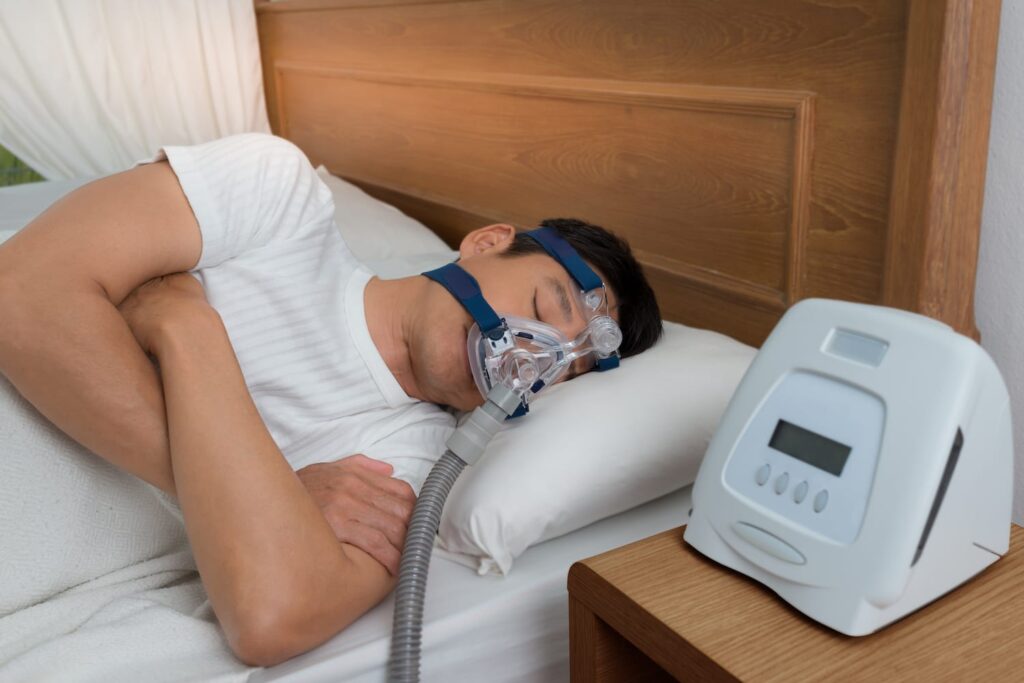
Obstructive vs. Central Sleep Apnea: Key Differences Explained
Introduction: The Hidden Danger in Your Sleep
Sleep is supposed to be a time of rest and repair. But for millions of people, the night becomes a silent struggle for breath. This struggle is known as sleep apnea — a disorder where breathing repeatedly stops or becomes shallow during sleep.
While many think of sleep apnea as a single condition, there are actually different types, and understanding them is essential for proper treatment. The two most common are obstructive sleep apnea (OSA) and central sleep apnea (CSA).
Both cause disrupted sleep and can lead to serious health issues, including heart problems, stroke, and cognitive decline. But they differ in their underlying causes, symptoms, and treatment approaches.
Causes of Sleep Apnea: Two Different Paths
Obstructive Sleep Apnea (OSA)
OSA happens when the airway becomes physically blocked during sleep. The muscles in the throat relax too much, allowing soft tissues — such as the tongue or soft palate — to collapse and obstruct airflow.
Common Risk Factors for OSA:
- Excess body weight, especially around the neck
- Naturally narrow airway or large tonsils/adenoids
- Aging, which reduces muscle tone in the throat
- Sleeping on your back
- Alcohol or sedative use before bedtime
- Chronic nasal congestion
Example: John, a 45-year-old office worker, gained weight over the years. His wife noticed loud snoring and occasional gasping at night. A sleep study revealed OSA caused by his airway narrowing during sleep.
Central Sleep Apnea (CSA)
CSA is different — there’s no physical blockage. Instead, the brain fails to send the proper signals to the muscles that control breathing. This results in pauses because the respiratory system simply “forgets” to breathe.
Common Risk Factors for CSA:
- Heart failure or other heart conditions
- Stroke or brain injury
- Neurological disorders such as Parkinson’s disease
- Certain medications like opioids
- High-altitude sleeping
Example: Maria, a 62-year-old with heart disease, underwent a sleep study after experiencing extreme fatigue. The results showed her brain wasn’t consistently signaling her body to breathe — a hallmark of CSA.
See more: CPAP Machines Australia: Top Models and Features
Symptoms of Sleep Apnea: Similar Yet Different
Both OSA and CSA share many symptoms because the ultimate result — reduced oxygen and disrupted sleep — is the same. However, subtle differences can sometimes point to which type is present.
Shared Symptoms:
- Loud snoring (more common in OSA)
- Pauses in breathing, noticed by a partner
- Gasping or choking during sleep
- Restless tossing and turning
- Daytime fatigue and sleepiness
- Morning headaches
- Difficulty concentrating or memory issues
- Mood changes, such as irritability or depression
Unique Indicators of CSA:
- Episodes of stopped breathing without snoring
- Waking up feeling short of breath
- More frequent awakenings throughout the night
- Symptoms worsening at high altitudes
In reality, only a sleep study can definitively tell whether someone has OSA, CSA, or even a combination called mixed sleep apnea.
Treatment Options: Tailored to the Type
For Obstructive Sleep Apnea (OSA)
1. CPAP Therapy
Continuous Positive Airway Pressure (CPAP) is the gold standard for OSA. It delivers constant air pressure to keep the airway open.
2. Oral Appliances
Dental devices can reposition the jaw or tongue to prevent airway collapse.

3. Surgery
Procedures may remove excess tissue, reposition the jaw, or correct nasal blockages.
4. Lifestyle Changes
- Weight loss to reduce neck fat and airway pressure
- Sleeping on your side instead of your back
- Avoiding alcohol and sedatives before bed
For Central Sleep Apnea (CSA)
1. Adaptive Servo-Ventilation (ASV)
A specialized device that adjusts airflow based on detected breathing patterns.
2. Bilevel Positive Airway Pressure (BiPAP)
Delivers different pressures for inhaling and exhaling to assist breathing.
3. Treating Underlying Conditions
Managing heart failure, reducing certain medications, or addressing neurological issues can improve CSA.
4. Supplemental Oxygen
In some cases, extra oxygen at night helps maintain healthy blood levels.
When Both Types Are Present
In mixed sleep apnea, treatment may combine OSA and CSA approaches — for example, using CPAP for the obstruction and adjusting therapy for central pauses.
Lifestyle Strategies That Help Both Types
Regardless of type, healthy daily habits can improve sleep apnea symptoms:
- Maintain a Healthy Weight: Even modest weight loss can improve breathing.
- Exercise Regularly: Strengthens the respiratory system and heart health.
- Optimize Sleep Position: Side sleeping often reduces apneic events.
- Address Nasal Congestion: Saline rinses, allergy treatment, or nasal dilators can help.
- Quit Smoking: Smoking irritates and inflames the airway, making apnea worse.
Why Getting the Right Diagnosis Matters
Because OSA and CSA have different causes, misdiagnosis can lead to ineffective treatment. Someone with CSA may not benefit from standard CPAP alone, while someone with OSA could miss out on a straightforward, effective solution.
Only a formal sleep study can identify the type of sleep apnea and guide treatment choices.
Conclusion: Breathing Easier Starts with Understanding
Sleep apnea — whether obstructive or central — is not something to ignore. Both forms disrupt oxygen flow, fragment sleep, and increase the risk of serious health problems over time.
The key to effective treatment lies in knowing which type you have. OSA involves physical airway blockages, while CSA is about the brain’s breathing signals. Understanding this difference ensures you get the right therapy, whether it’s CPAP, ASV, surgery, or targeted lifestyle changes.
If you or someone you know snores loudly, experiences unexplained fatigue, or has pauses in breathing during sleep, it’s time to talk to a healthcare provider. A sleep study could be the first step toward restful nights and healthier days.
